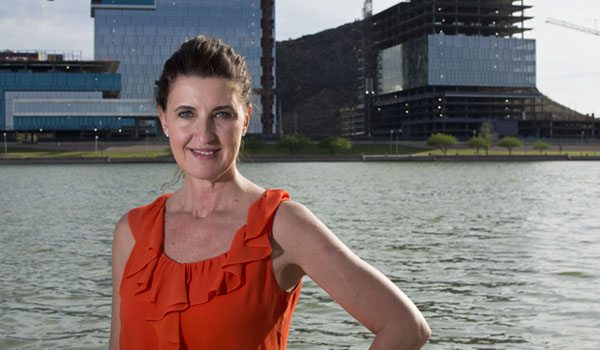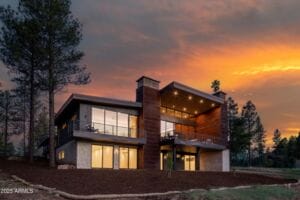If Valley Partnership is the voice of responsible development in the Valley, new CEO and President Cheryl Lombard is expected to be the deep breath behind it. In mid-March, she transitioned from being director of government relations at The Nature Conservancy in Arizona to the leader of Valley Partnership.
“We were looking for a transformative leader that could really build on the organization’s more than 25-year history,” says Chairman of the Board Scott Nelson of Macerich. “Someone who was well connected and respected in the community, especially in the role of advocacy, which is one of our organizational pillars. We truly believe there is an opportunity to take Valley Partnership to the next level as a voice in the community and a value-add proposition to our partner companies. We are extremely confident that Cheryl can deliver on those promises.”
Lombard has led companies and clients through challenging entitlement cases and large master-planned community developments in California.
“Her understanding of the government agency, municipal and community touch points and how they relate to the development process is paramount in the underlying goals of Valley Partnership,” says Nelson.
While at The Nature Conservancy in Arizona, Lombard helped develop, lead and execute the strategic initiatives for the organization.
“Her Nature Conservancy involvement with local, state and federal legislation and policy making will be a tremendous asset to Valley Partnership,” says Nelson. “Her role required her to bring different stakeholders and viewpoints together to work on and advance issues impacting the organization.”
Lombard holds a J.D. from Southwestern University School of Law, a Master’s in public administration from California State University and a Bachelor’s degree from American University.
What attracted you to working with Valley Partnership, given your previous role at The Nature Conservancy?
I gained years of experience in the development industry as a public affairs executive and attorney in California, helping acquire entitlements through some of the most challenging bodies. My 10 years with The Nature Conservancy made Valley Partnership the perfect fit to utilize my experience representing all sides in the development process.
What Valley Partnership Political Action Committee (VPAC) efforts we can expect with you as president and CEO?
VPAC is a great tool that allows us to participate in the political process at a different level, while also furthering Valley Partnership’s reach. We anticipate enhancing VPAC for the 2016 elections to actively support state and local candidates and potentially ballot measures that share our principles and priorities.
What specific issues is Valley Partnership advocating in 2015?
The biggest is how we prepare for the future and our water so we continue to maintain economic vitality. Arizona has led the way in the West with its leadership in dealing with a continuing drought. We need to ensure funding is sufficient to our state agencies and water providers to ensure our water security.
Next are economic development and the tools we need for infrastructure, a well-funded Arizona State Land Department, and consistent policies on taxes and fees. As we prepare for the 2016 legislative session, we want to work closely with the chambers and other commercial real estate development organizations to assemble a unified agenda.
How does Valley Partnership partner with — and distinguish itself from — the other commercial real estate and development organizations in Arizona and the Valley?
Valley Partnership is an advocacy organization that is an umbrella group and honest broker for the development industry. We are the only group who can lobby at all levels of government and have members from the commercial, industrial and master planned real estate development industries. Other groups are slightly narrower in focus or membership. However, partnerships, collaboration and coordination with all of these groups is extremely important to all of our success.
What role do you see Arizona’s higher education institutions playing in the Valley’s development and growth? How do you think the recent budget cuts to education may affect such development?
The leadership and forethought of Arizona’s higher education institutions in the development of downtown Phoenix and Tempe have had a tremendous impact in kick-starting surrounding commercial development. It has made the universities a nationwide example of how public and private investment can be done. Recent budget cuts have made it even more important for our higher education institutions to focus on how to make the most of their assets and be true entrepreneurs.




